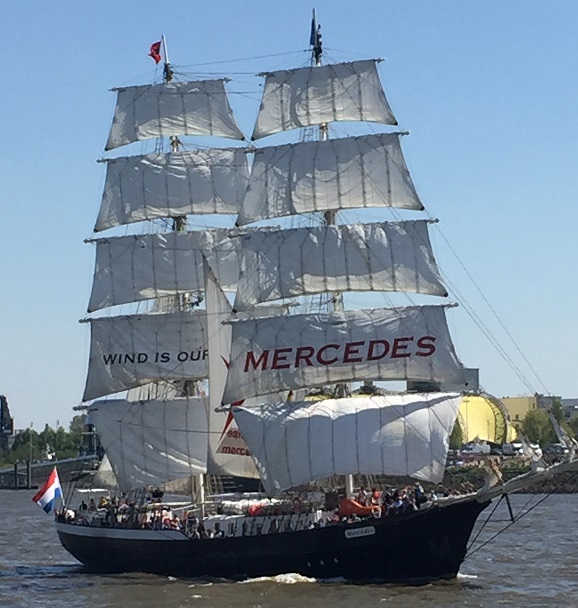It’s hard to believe we’re ¾ of the way into
our first year in Hamburg. At this time last year, it wasn’t even a blip on our
radar!
Now, Larry is a regular employee at GGS (i.e., not
contract) working on a new project, and I’m taking another German class and continuing
work on my writing.
How do you like Hamburg?
That’s the first question people ask when they
learn I’ve moved here. That’s to be expected, but I’m consistently surprised
by their reactions to my answer, which has evolved over time from “it’s
different, but nice,” to “I like it,” to “I love it.”
Usually the response runs along the lines of an
exchange I had with a gentleman at the flea market, who moved here from
Ghana 20 years ago. When I told him I really liked living in Hamburg, he looked
at me in utter disbelief and exclaimed, “But you came from America!”
Hmm. I guess I don't see my love of America and my love of Hamburg as incompatible. Besides, if there was one place in the world that could be everything for everyone, we'd all be living there, right?
Hmm. I guess I don't see my love of America and my love of Hamburg as incompatible. Besides, if there was one place in the world that could be everything for everyone, we'd all be living there, right?
What’s your favorite thing?
That's the next question people ask, particularly if they know I'm writing a blog about my experience here.
 The flippant answer: Everything except the winter.
The flippant answer: Everything except the winter.
 The flippant answer: Everything except the winter.
The flippant answer: Everything except the winter.
The short answer: Last week I was running some errands, and in the
course of only two hours, I ran into people I know in three different areas of the
city. Hamburg is large enough
to be interesting, and small enough to feel comfortable.
The long answer: I suspect other expats ask this question because they’re looking for things they might do here, and people from Hamburg
just want to know what an outsider thinks is great about their city.
How would you answer that question about where you live? It's hard, especially as different types of experiences bubble up into your mind.
So I decided to go back through my “bucket list” that I created when we first moved here, to see what I’ve done so far:
So I decided to go back through my “bucket list” that I created when we first moved here, to see what I’ve done so far:
 |
| The butterfly garden has a hothouse, outdoor garden, water garden with coi, birds, bunnies, and more. |
 |
| Kitchen at Chocoversum, where we got to choose ingredients to make our own chocolate bar! |
 |
| Let's face it, carnivals are pretty similar in the attractions they offer. But we went to the Winter Dom to check it out, then came back for the Spring Dom to enjoy the food! |
 |
| The Polizeimuseum is on the campus of Hamburg's police academy, and provides a good history of the city's law enforcement, complete with a hands-on forensics area. |
- Historic City Centre Tour
- Isemarkt
- Kramer-Witwen Wohnung
- Neuengamme Concentration Camp Memorial
- Old Elbe Tunnel
- Police Museum
- St. Georg Steamboat Cruise
 |
| The St. Georg is an authentic steamboat that provides tours on the Alster lakes in the heart of downtown. |
 |
| Treppenviertel is this part of Hamburg -- nice homes nesteled in hills above a beach, with steep, narrow, winding staircases you can climb for a nice view of the Elbe |
 |
| The Speicherstadt-- Hamburg's historic warehouse district-- is a UNESCO World Heritage Site and the world's largest carpet trading and storage area. |
- St. Michel Tour
- St. Nikolai War Memorial Museum
- St. Pauli Fish Market
- St. Pauli Tour
- Speicherstadt Tour
- Spice Museum
- Strandperle
- Treppenviertel
 |
| Strandperle is where we celebrated German Unification Day. |
Getting back to the question of a "favorite," I don’t have one thing I’d call out (although the Botanical Garden is a contender).
Each time I see or do something new I relish the experience, but I'm always eager to see and do more.
I think I have some small fear that if I reach the point where something gets crowned “the winner,” I’ll stop exploring as much. And I have a lot more things I want to see before hitting the one-year mark in August!
p.s. I've written reviews for several of these attractions on tripadvisor.com if you want more information. You can also always drop me a line.


































